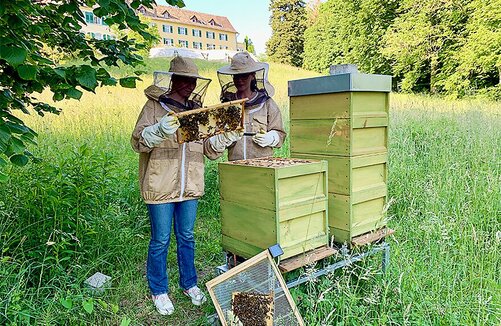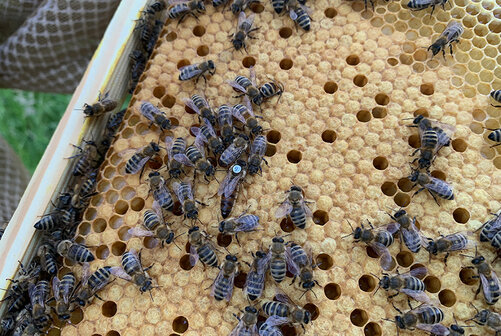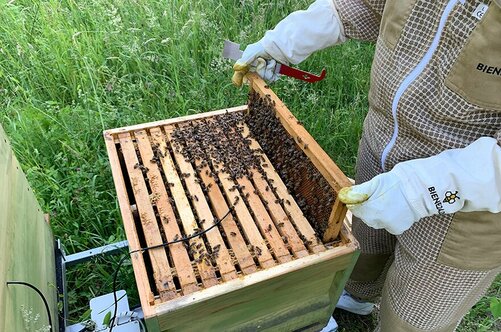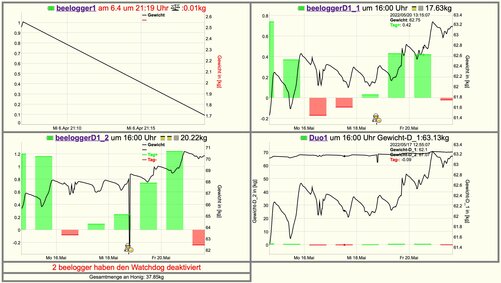How We Know When Spetzgarter Bees Are Dissatisfied with Their Queen
It is that time of year again. We are keeping an eye on two bee colonies on the Spetzgart Castle campus and hoping for a successful honey harvest – or at least a better one than in 2021. Last year the conditions were especially unfavourable. Due to a long spell of cold and rainy weather, the bees could not gather enough nectar. Even when meadows are covered in blossoms, honey bees will leave their hive only when temperatures rise above approximately 10 degrees celsius. Fortunately, we installed a solar-powered beelogger last summer. Every 20 minutes it measures the most important parameters of the beehive: weight, indoor and outdoor temperature, humidity. Every two hours the data are transmitted to a server and become accessible online. In this way we can see the correlation between yield, temperature and atmospheric humidity almost in real time.
Last year our bees had to be fed even into the month of May. Hence there was only a very small harvest or yield of about five kilograms of honey. This year, thanks to the financial support of the Friends of Salem, both of the Spetzgart colonies rest on beeloggers. As a result, it is possible to compare the data from both of them. If the hives’ values deviate from each other significantly, we can recognize problems much more quickly. The online data give a ready overview of the daily changes in weight:
In this display it can be seen that the second bee colony (bottom left) is “stronger” than the first colony (top right), and has produced more nectar. Students can also observe the correlations during their weekly inspections. While the bees in colony 2 (beeloggerD1_2) build their beecombs uniformly and keep the workers (female bees), drones (male bees) and nectar strictly separate, it is evident that the bees in colony 1 (beeloggerD1_1) follow a rather chaotic strategy. When bees start to create additional queen cups, they are showing dissatisfaction with their queen. In this case the beekeeper must remain alert and take care that the colony does not swarm out (and possibly create a further colony).
We are pleased that the beelogger technology also allows people off campus to share in the excitement of watching our bee colonies. Here the link to the visual data. You can view the individual hives by selecting ”D1_1” or ”D1_2” in the drop-down menu at the top left corner of the webpage.



